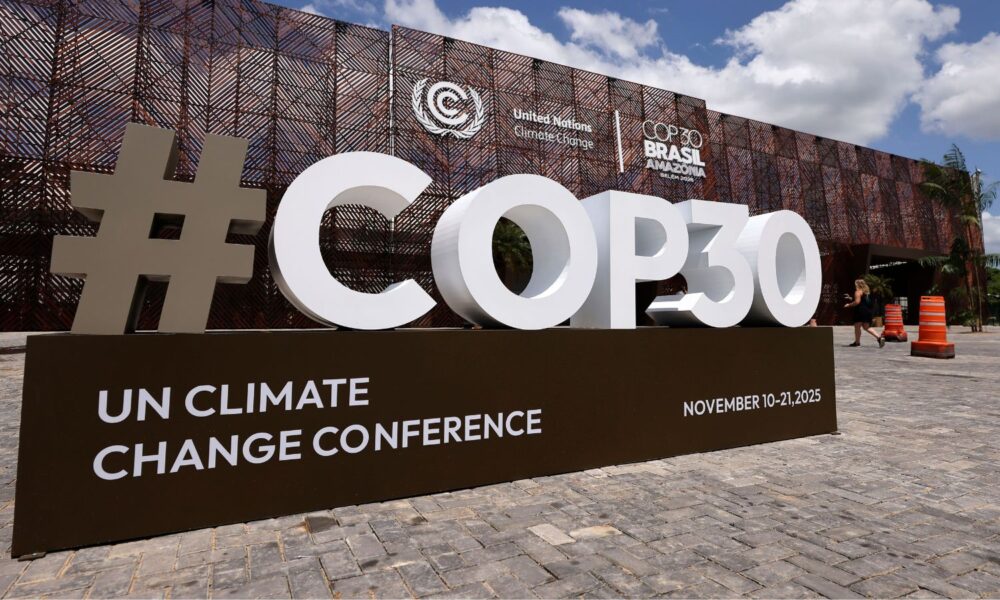As the world gathers in Belém, Brazil, for the annual UN climate summit COP30, both expectations and stakes are high. This conference marks thirty years of global climate negotiations, and ten years since the Paris Agreement. These are milestones that show us both how far we’ve come and how much further we must go. The Brazilian presidency has promised a reset, framing COP30 as a summit focused on implementation: turning commitments into action through real emissions cuts, stronger adaptation, and meaningful climate finance.
Yet, as my colleague Rachel Cleetus noted, this moment comes amid escalating climate impacts, strong political headwinds, and renewed efforts by fossil fuel interests to delay progress. Anyone who has followed the United Nations’ processes around setting climate policy knows that progress is rarely linear. Behind the scenes, political and procedural dynamics can determine whether negotiations build momentum or lose it. Once you begin to understand these dynamics, it becomes clear that certain parties often employ deliberate efforts to slow or weaken progress.
A new primer from the Climate Social Science Network (CSSN) offers a useful lens for this moment. It unpacks how climate obstruction operates, identifying the subtle but pernicious ways that governments, industries, or negotiators slow things down, shift attention, or weaken global ambition. Recognizing these patterns is powerful. When we can see obstruction clearly, we can call it out, counter it, and keep the focus on scaling up solutions.
Understanding climate obstruction
Global climate negotiations are complex. COP in particular brings together nearly two hundred countries with different capacities, priorities, and responsibilities to reach consensus on how to address a shared crisis. That level of coordination is extraordinary, and disagreement is plentiful. Yet, as with any multilateral process, not all slowdowns or disagreements are created equal. Some reflect genuine differences in perspective or capacity. Others, however, are deliberate efforts to stall, dilute, or redirect ambition.
Researchers call these behaviors “climate obstruction,” the actions or strategies that subtly shape negotiations in ways that slow progress or weaken outcomes. Obstruction is not new, and today it is rarely straightforward, making it hard to identify in real time.
The new CSSN primer identifies fourteen recurring obstruction tactics observed across the UNFCCC’s history. I won’t outline them all here, but just to illustrate them, here are two examples. A very common one is procedural delay, which can look like endless debates over rules, or requests for additional review time that quietly push decisions down the road. I’m also certain we’ll see agenda manipulation at COP30, especially from major fossil fuel producers seeking to keep topics like fossil fuel phase-out or climate finance off the table entirely. Sometimes these may seem like small procedural moves, but over time they can significantly limit ambition and slow collective progress.
Top five places to watch for obstruction at COP30
Again, while not every disagreement is obstruction, patterns across past COPs show that certain agenda items are particularly vulnerable. Here are five we plan to watch closely:
1. Fossil Fuels and Reducing Heat-Trapping Emissions
After previous years’ tense debates over transitioning away from fossil fuels, emission reductions language remains deeply contested. Some countries may try to keep fossil fuel phase-out discussions off the agenda entirely, a form of agenda manipulation that limits what can even be negotiated. Others may claim that rapid transformation is impractical or premature, even as they expand fossil fuel infrastructure at home. In truth, science shows that phasing out fossil fuels and replacing them with renewables is not only feasible but essential for keeping global temperature goals within reach. As always, we’ll also need to keep an eye on lies and disinformation directly from the fossil fuel industry.
2. Global Goal on Adaptation
Countries are still working to define what effective and equitable adaptation to climate change looks like in practice, including how to measure real progress, not just intent. In this work, obstruction can show up in subtle ways, such as the perfectionism trap which may look like calls for endless data or flawless indicators that delay agreement, or efforts to keep the goal so vague that it loses meaning altogether. This matters because people are already experiencing the accelerating impacts of climate change, and the latest science shows these harms will intensify unless heat-trapping emissions are rapidly reduced—so communities on the frontlines must have the support and resources they need to adapt now.
3. Forests and Land Use
Forests are back in the spotlight this year, but not all forest-related proposals point toward real progress. Some countries may promote offsets or market-based solutions instead of binding deforestation targets, an example of advancing non-transformative solutions. Others may redirect responsibility, highlighting deforestation in the Global South to deflect from weak fossil fuel phase-out commitments in the North. These tactics can appear constructive but ultimately dilute ambition and delay real progress.
4. Loss and Damage Implementation
Under the UNFCCC, loss and damage refers to the harms caused by climate change that go beyond what can be prevented through emissions reductions or adaptation, such as permanent loss of land, livelihoods, or cultural heritage. A Loss and Damage Fund has been established, but the question of how it will work is front and center. Some countries may seek to narrow its purpose to small-scale or technical projects, avoiding larger questions of scale and responsibility. Others might call for more time and further study, a delay tactic that slows the delivery of urgently needed support to vulnerable communities already experiencing devastating climate impacts.
5. Just Transition and Rights Language
A just transition refers to the shift towards a low-carbon economy that is fair and inclusive, ensuring that those most affected by the clean energy transition are supported through new opportunities, protections, and participation in decision making. Ensuring this transition protects human rights and promotes equity is central to effective climate action. Yet, negotiations around trade, Indigenous rights, and human rights protections can become points of tension. Some countries may try to keep this language nonbinding or purely aspirational. A successful outcome will depend on making sure these principles are reflected in implementation, not just in rhetoric.
Strengthening the process
By recognizing obstruction, we can help protect the integrity of the UN climate process and ensure that these negotiations deliver what science and justice demand. Transparency, persistence, and collaboration are essential to countering tactics that slow or weaken global climate progress. As leaders gather in Belém, the world cannot afford more delay. Many of the solutions for climate change are known, the science is clear, and the responsibility must be met fairly.
My colleagues will be on the ground at COP30, tracking developments and reporting on what they see and hear. By identifying obstruction as it happens, amplifying voices calling for accountability, and connecting science with action, we can help make sure that COP30 works to move the world closer to the fair, effective, and science-based climate action that we urgently need.

